April 12th, 2006
By Pete Vack and Ean McDowell
Photos by Ean McDowell
The ASA (Autoconstruzioni Societa per Azioni) 1000 GT was a car Enzo Ferrari never wanted to produce.
Not by his factory, at any rate. He would, according to contemporary reports and first hand interviews, develop the car and when he was good and ready, he would sell the rights to someone who had the money and material to produce 3000 units of the baby Ferrari--originally called the "Ferrarina"--and therefore reap the benefits of licensing without having to bother with production.
No one is sure why Mr. Ferrari wanted to design and develop a one liter GT, although we might speculate that the Suez oil crisis of 1956--which spawned the Mini, the Isetta, and many other small cars--may have started the ball rolling. During a press conference in 1959, Ferrari unveiled a four cylinder 850cc engine to eager reporters. It was, in fact, one third of a 250GT engine, with a bore of 65 mm and stroke of 64, topped by a SOHC and was notable for the fact it could produce 75 hp at 6800 rpm out of the box--far ahead of the era's competition.
La Ferrarina
Then, according to Bernard Cahier, "...the next thing we knew was that Ferrari had mounted this engine in a short wheelbase, 1200 Fiat with a Pininfarina body.." A little later on, at the 1961 Turin Auto Show, there was a very pretty "Ferrarina" GT sitting on the Bertone stand, complete with a 1000cc engine. Nothing more was said or heard until the summer of 1962, when it was announced that a branch of the Milanese De Nora Electromechanical firm had purchased the design and it would now be called the ASA 1000 GT.
And so it was. At least for a brief, glorious period, of about three years. Estimated production was about 118 cars. (An update of the ASA list has just come through from Europe. They list 90 coupes, 17 Spiders, and 11 prototypes known although not all still existing.) Somehow we don't think Enzo got his money out of the venture.
Like the Dino 246GT, the ASA was never officially a Ferrari, but a rose by any other name is still a rose, and the ASA is as Ferrari as Ferrari comes, albeit in a small package. The chassis was typical Ferrari tubular, with a solid rear axle, coil springs and anti sway bar. Up front, twin wishbones were controlled by coil springs and sway bar---conventional, Ferrari type stuff. But the ASA also had four wheel disc brakes at a time when Ferrari was still hard pressed to put them on his production cars. A four speed transmission offered great ratios and overdrive.
ASA Performance
In 1962, Bernard Cahier had a chance to put the ASA through a complete road test. By then the one liter engine was producing 97 bhp at 7000 rpm but weighed in at 1870 pounds..the ASA was a fully equipped GT car with a steel body, after all. Cahier chalked up the following performance figures:
0-30...4 seconds
0-60...13.8 seconds
0-100...42 second
Quarter mile...19.2 seconds
Top Speed, 112 mph
So, what's it like to drive? Ean McDowell, whose car is featured here, wrote a particularly well done article for VeloceToday in early January, and captured the essence of the car quite eloquently. (click here for "Night Drive").
The McDowell ASA
McDowell, who lives in Melbourne, uses his ASA and is not overly concerned if it is not Pebble Beach ready. His interest started with the purchase of a basket case in the early 90s. "The ASA was pretty sad and missing its motor and in fact had been sold but the deal fell through. I looked at the instruments, the steering wheel, the Borrani wheels, disc brakes and the beautiful miniature Ferrari chassis and decided it was worth looking at for the rest of my life even if it I never drove it."
It took another four years of searching for an engine before finding an original car in good condition in Spain. "I was based in Malaysia at the time, and I worked out that I could get to Europe and back in three days. I left work as usual on Friday and caught a flight to Paris. After a harrowing purchasing experience, I flew to Malaysia in time to be at work on Tuedsay morning after a long weekend. In the office, people were saying 'I played a round of golf.... we had a bar-b-que..' When they asked me what I did during the long weekend, I told them I went to Spain and bought a Ferrari". My boss who was not the slightest bit interested in cars (is this the case with all bosses?..Ed) was furious and said 'If I knew you were going to do something as crazy as that I would have come with you'.
Epilogue
The De Nora's venture was probably doomed to failure. Mike McCarthy probably got it right when he wrote "...selling a one liter car at Porsche prices, even when designed and developed by Ferrari, was more a way to squander a fortune than to make one." ASA, via NART, entered two 1300 versions at LeMans in 1966 but both retired. As did the ASA factory, by 1967.
Interestingly, there was another ASA GT, coined the GTC. It was a Bizzarini engineered, Drogo bodied mini-GTO. It appeared at Monza in 1963, and the aluminum body had dropped the overall weight down to a mere 1300 pounds. Apparently, it went nowhere. According to McDowell, much of what was in the factory still remains. There are many brand new parts including complete engines that have never run. The GTC does still exist as does a Formula Junior. The grandson owns an ASA but apparently refuses to talk about what ever happened.
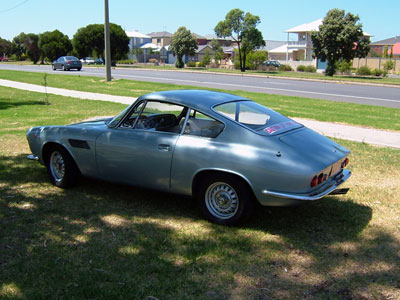
One of the prettiest of all small cars, the ASA's lines are well balanced and weathered the years gracefully.
|
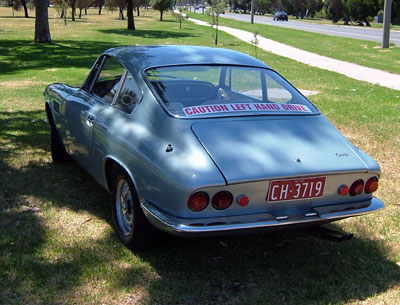
Caution sign is a warning to other drivers in Australia who are not used to left hookers.
|
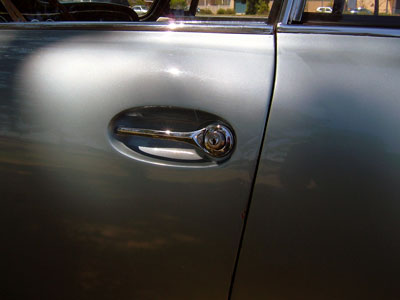
Beautiful detail in the door handles. This was, after all, a Ferrari first.
|
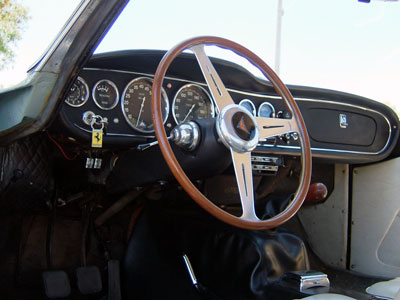
Reflecting that fact, the driver's compartment has all that is necessary and desirable.
|
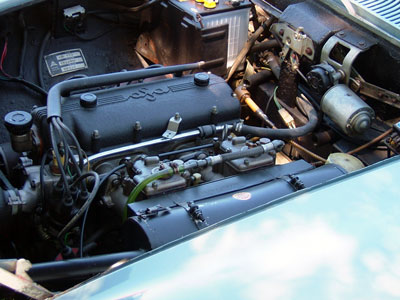
The engine looks very familiar, and why not? It is one third of the classic 250GT V12.
|
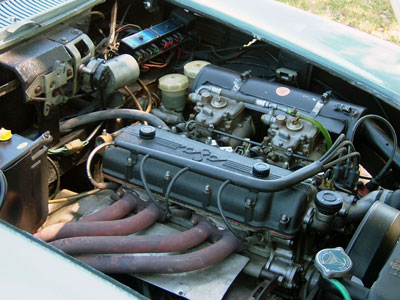
McDowell's car is not a show car, but driven often in a variety of events in Australia. And good for it!
|
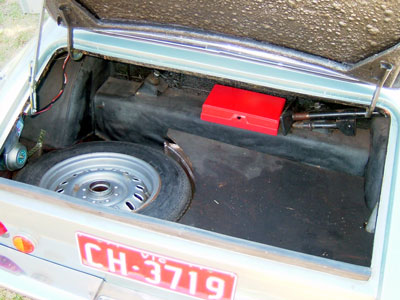
For a small car, there is a surprising amount of luggage space.
|
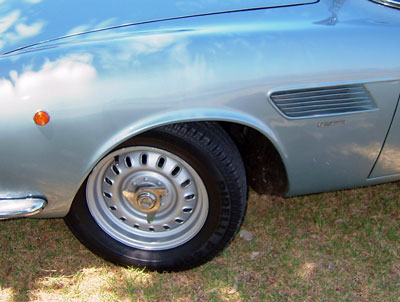
The wheels are Borranis--steel centers and aluminum rims.
|
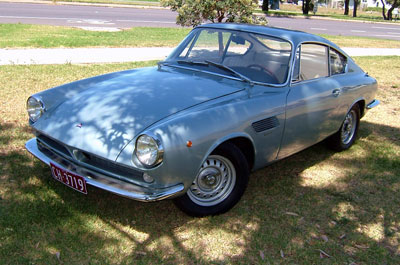
Too bad Enzo only wanted to sell the rights to the little Ferrari. Had he built it,
there would probably have been a long and successful production run.
|



